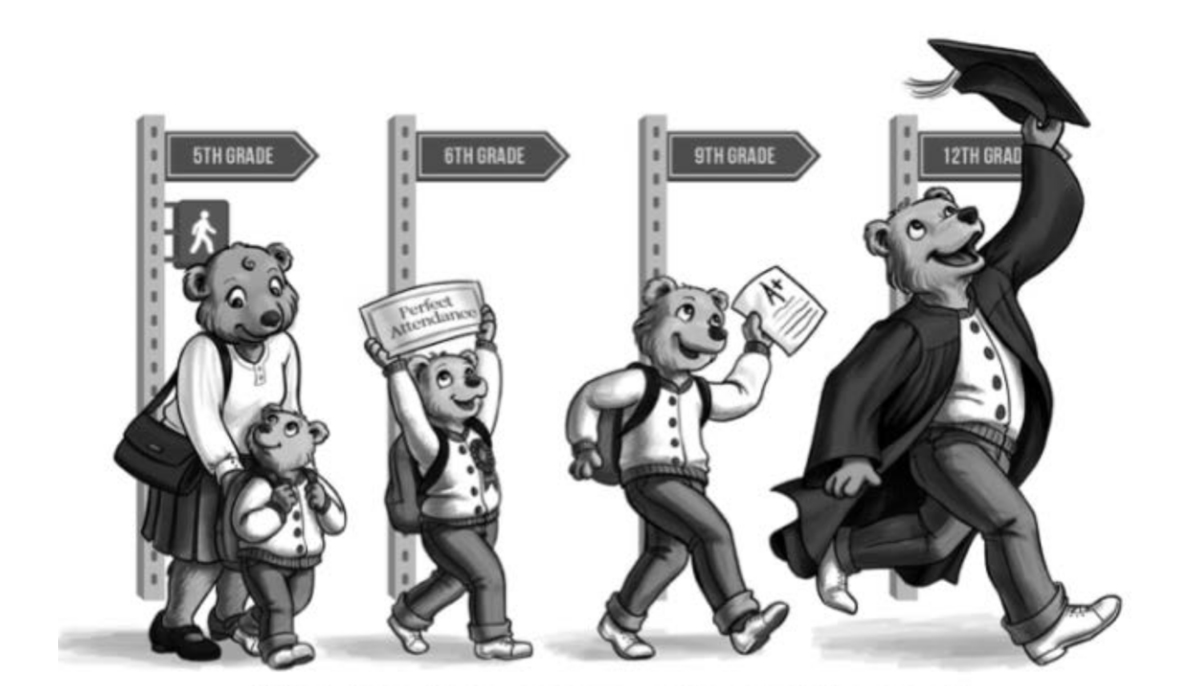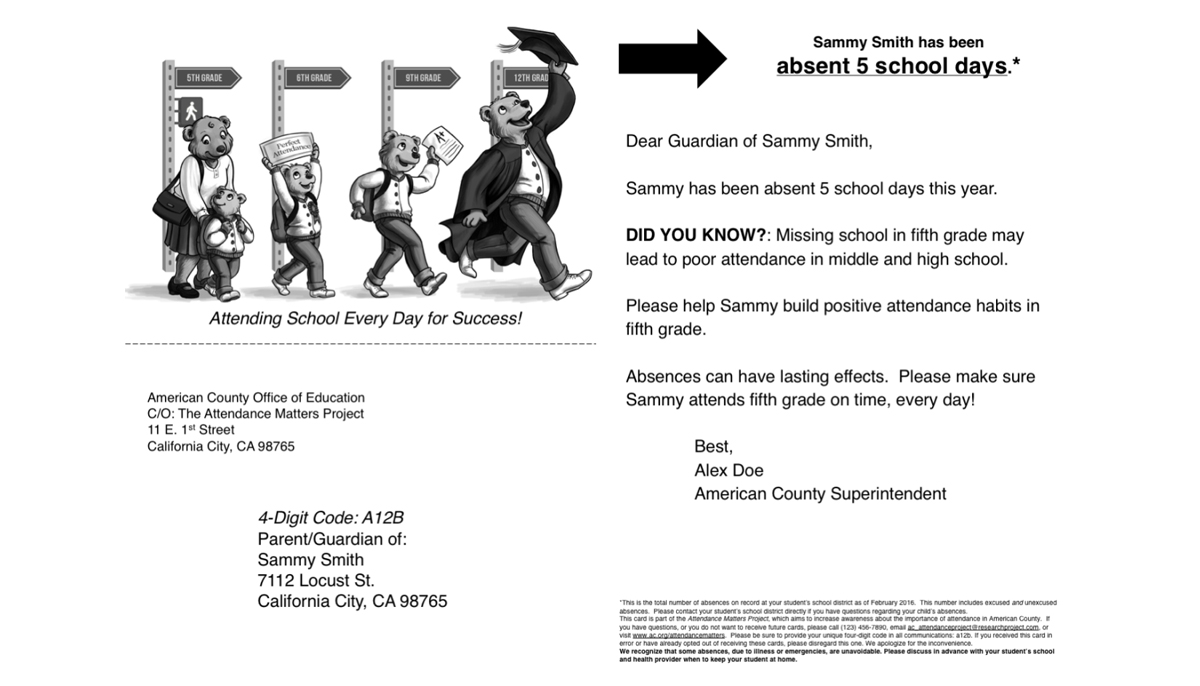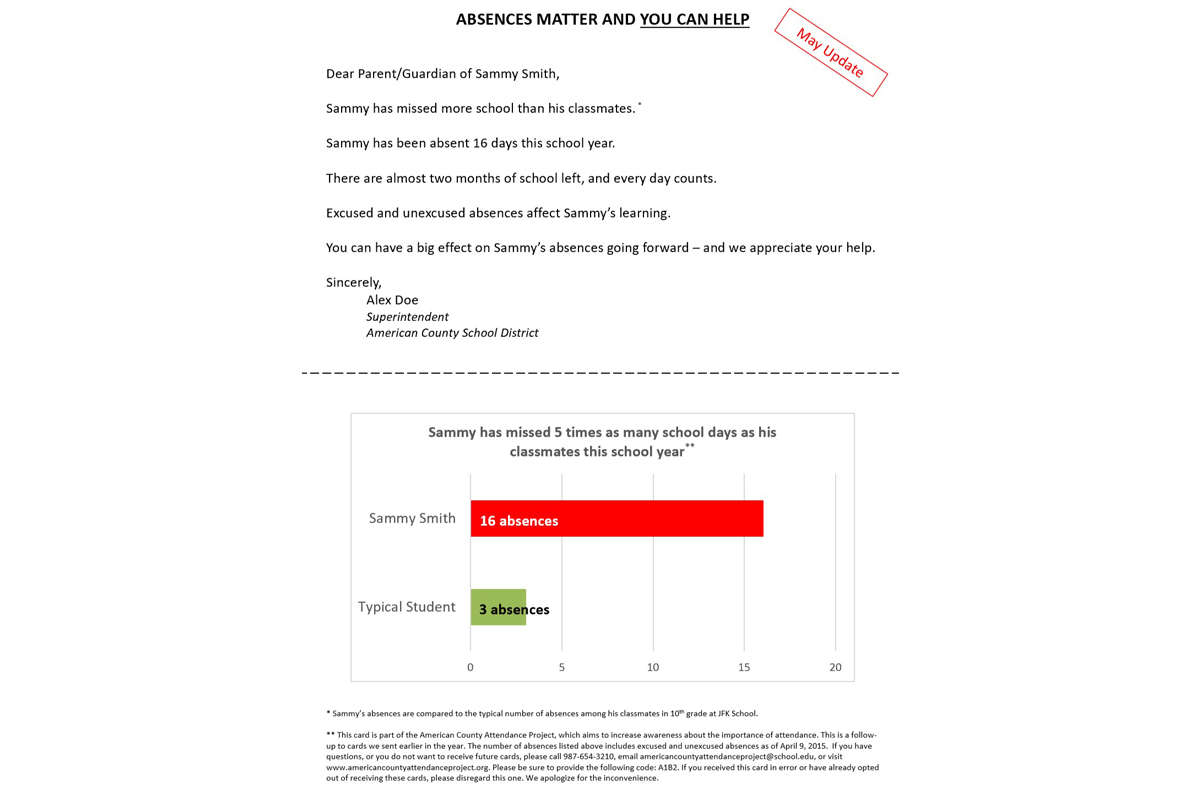
Late winter — with colds, extended family vacations, and general fatigue — is a peak period for school absenteeism. How can schools best combat that problem?
They’re certainly trying — and for good reason. Absenteeism is associated with lower academic performance, increased dropout, and even higher rates of future incarceration. In response to the federal Every Student Succeeds Act, most states now use reducing absenteeism as one of their core measures of school performance and improvement. For some schools, there are also financial incentives, as some funding is linked to average daily attendance.
With the pressure on to reduce the number of school days missed, many schools have introduced attendance awards to incentivize students.
A few years ago, we set out to test this strategy. Along with Jana Gallus at University of California, Los Angeles and Monica Lee at Stanford University, we conducted a randomized controlled experiment involving 15,329 middle and high school students across 14 districts in California. These students, who all had a perfect month of attendance during the preceding fall semester, were randomly assigned to one of two groups involving awards, or a control group that received no additional communications and served as the comparison. At the end of January, we sent students in the two award groups a mailing to their homes. One group received a letter informing them that if they had a perfect month of attendance in February, they would receive a high-quality embossed certificate acknowledging their achievement. The letter the second group received told them they earned an award for having had a perfect month of attendance earlier that school year, and the certificate was actually enclosed in the mailing.
California Experiment: Sample Mailing
Like the thousands of schools that use similar symbolic awards to motivate students, we predicted they would reduce absenteeism. In fact, we publicly posted these predictions before analyzing the data.
To our surprise, though, students who earned an award for a past month of perfect attendance missed more school in February than students who did not earn an award. The award increased the number of school days students missed by eight percent. Students who were offered the opportunity to earn the award for having a perfect month of attendance in February showed, on average, no reduction in absences relative to the control group. When we looked at these students’ absences in March, they too attended fewer days of school than students who were never offered the award. In both cases, after the award period was over, student absences increased.
To understand why attendance awards hurt student attendance, we conducted a follow-up survey experiment. The results suggest that awards may unintentionally signal to students that they had attended more school than their peers and that they had overshot their schools’ expectations for their attendance, leaving them feeling licensed to miss school moving forward. To be sure, this one experiment does not suggest that all education-related awards are useless or counterproductive. Our exploratory analyses suggest that the offer of an award for perfect attendance may slightly motivate middle school students but not high school students. The intuition that these awards would reduce absenteeism seemed sensible, like so many intuitions. Only through rigorous research like this randomized experiment, though, were we able to assess their true impact.
Although the award strategy for improving attendance may backfire, not all interventions aimed at reducing absenteeism are ineffective. Using insights from behavioral science, we have developed and studied interventions that do indeed work as intended. For example, another randomized field experiment that delivered repeated mailings to students’ parents meaningfully reduced the number of school days students miss each year. The study, conducted by Todd Rogers and by Avi Feller from the University of California, Berkeley, involved the families of over 28,000 students at risk of high absenteeism in the School District of Philadelphia.
In the Philadelphia study, parents were randomly assigned to a control group or one of a range of treatment groups that received personalized attendance reports consisting of messages encouraging daily attendance plus tailored data elements that aimed to correct two false beliefs widely held by parents. First, parents tend to underestimate their own child’s absences by 50 percent. That is, if a student has missed 20 days of school, the student’s parent tends to believe the student has only missed 10 days. Second, parents – like all of us – fall victim to the Lake Wobegon effect, named after the community described in the radio show “A Prairie Home Companion,” where all the children are believed to be above average. So, when it comes to attendance, parents of students who have missed more school than their classmates tend to believe their children have missed the same or fewer days than their classmates. It is understandable for parents to harbor these inaccurate beliefs, given that it is cognitively difficult to keep accurate track of absences as they accumulate over time, parents receive little to no information on how their children’s absences compare to other students, and parents are motivated to think well of their children (and themselves).
Philadelphia Experiment: Sample Mailing
Sending personalized reports to correct false beliefs about attendance was inspired by behavioral research on energy conservation. Many utility bills now provide consumers with personalized information on how much energy they use and how their consumption compares to that of their “most efficient neighbors.” This strategy has proven to be one of the most effective ways to encourage home energy conservation. When people receive information that corrects their false beliefs, they are motivated to change their behavior to align with their updated beliefs. In the case of energy consumption, people believe they expend the same or less energy than others because, like attendance, it is hard to track, not easily comparable, and a domain where people are motivated to think well of themselves. So, when people learn they are using more energy than people they live near, they respond by cutting back their own energy use. Therefore, we hypothesized sending parents a report with up-to-date and accurate information on their child’s attendance record several times over the course of the school year would result in parents intervening to reduce the number of school days their child missed.
The intervention reduced chronic absenteeism by 11 percent, though different variants of the treatment showed varying effects. The absence-reducing effects were consistent across grades, races and ethnicities, genders, and socioeconomic status. Interestingly, the effect spilled over to siblings living in the same household as the students being targeted by the intervention: increasing one student’s attendance increased the attendance of that student’s siblings.
Teaming up with Monica Lee and Eric Dearing from Boston College, we conceptually replicated the findings in a second experiment involving almost 11,000 kindergarten through fifth graders in ten California school districts. Although absenteeism is often touted as a problem emerging in middle and high school, it is often just as prevalent in the early grades and may have longer-term impacts. In addition to correcting parents’ false beliefs, we enhanced the treatment by featuring attention-grabbing images and numbers that reinforced the messaging.
The majority of parents reported showing the mailing to others in their homes or hanging them on their refrigerators. This may explain why these two studies of repeated mail-based interventions decrease absenteeism, while other research suggests absence-interventions using cellphone text messages have no detectable impact on the attendance of school-age children. The postal mail-delivered personalized attendance reports reduced absenteeism at a cost of between $5 and $10 per absence avoided. The intervention, which uses already collected student data, is particularly cost-effective in contrast to current best practices that involve mentors and truancy officers. They can cost 50 to 100 times more per absence avoided.
Each student absence has its own human story, and meaningfully reducing the number of school days students miss each year will require a wide range of interventions. By systematically evaluating these interventions, some common practices will be unexpectedly debunked. But then we can leverage the science of human behavior to identify new and cost-effective strategies that districts can easily adopt to reduce student absenteeism at scale.
Todd Rogers is Professor of Public Policy at Harvard Kennedy School of Government, and cofounder of In Class Today, a social enterprise that helps districts reduce absenteeism using proven, behavioral science-inspired interventions. Carly Robinson is a doctoral candidate in Education at Harvard University.




